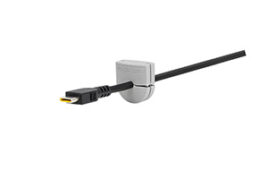 It should be no surprise that IoT is a hot topic on the IMTS 2016 show floor. Whether a company is using it, plans on using it, or wishes they were using it better, it’s a part of nearly every conversation at some point. For Opto 22, IoT is a big part of the company’s newest product offering. I had the chance to visit the company’s booth and learn more about its SNAP PAC REST API and its relation to the Internet of Things.
It should be no surprise that IoT is a hot topic on the IMTS 2016 show floor. Whether a company is using it, plans on using it, or wishes they were using it better, it’s a part of nearly every conversation at some point. For Opto 22, IoT is a big part of the company’s newest product offering. I had the chance to visit the company’s booth and learn more about its SNAP PAC REST API and its relation to the Internet of Things.
Like all industrial controllers, the SNAP PACs contain and control quite a bit of data—data from the I/O points connected to the PAC, and data in variables within the controller’s logic. The SNAP PACs are industrially hardened, small footprint programmable automation controllers (PACs). SNAP PACs control analog and digital SNAP I/O modules, which come in a range of signal inputs and contain from 1 to 32 I/O points. In both automation and the Internet of Things, I/O serves a key function: translating between the physical world and the digital world. As automation engineers know, sensors and machines typically understand electrical signals like voltage and current; PLCs, PACs, DCSs—computers do not. This translation can go both ways:
For monitoring, I/O takes the electrical signals from physical things and translates them into the ones and zeros understood by the digital world.
For control, I/O translates digital ones and zeros into electrical signals and sends them to act on physical things. That works for automation, but not for the IoT. The stumbling block is getting the data to that last step—either into or out of the networks and protocols used by the IT world. It takes a variety of hardware and software—protocol converters, middleware, drivers—to move the data from PLCs, PACs, and DCSs to IT systems. But without this last step, the Internet of Things is impossible.
This is where Opto 22’s S-series and R-series SNAP PAC come in. They bridge the gap between OT and IT systems. The next question, of course, is how do they do this?
First, they run on standard Ethernet networks and communicate over the standard Internet Protocol (IP), so networking and protocols are already compatible with IT technologies. And second, as of firmware version R9.5a, SNAP PACs also include two critical building blocks of the IoT:
• a built-in HTTP/HTTPS server for communication
PAGE
• a RESTful API (application program interface based on the REST architecture, which is a standard developer’s format for writing programs).
Opto 22 says this new product advance is the next step in IoT development for them.

Node-RED was created by IBM and is a free, web-based, visual tool that can be used to “wire” together hardware devices, APIs, and online services.
“With the release of this new API directly to our controllers and I/O, when our customers and partners ask us how to connect their machine and automation systems to the Internet of Things, we can simply tell them, there’s an API for that,” said Matt Newton, Director of Technical Marketing for Opto 22.
Opto 22 also told me that if a user is not ready to write their own program for the client using one of the languages compatible with the REST API, they can access data on the PAC by using Node RED. Node-RED was created by IBM and is a free, web-based, visual tool that can be used to “wire” together hardware devices, APIs, and online services. For example, you might use Node-RED to provide a facilities manager with a map showing local temperatures, chiller on/off times, and electrical usage for building sites. This “mashup” could use data from your PAC, a weather website such as Weather Underground, and Google maps.
Opto 22
www.opto22.com
Filed Under: IoT • IIoT • Internet of things • Industry 4.0, CONNECTIVITY • fieldbuses • networks





Tell Us What You Think!